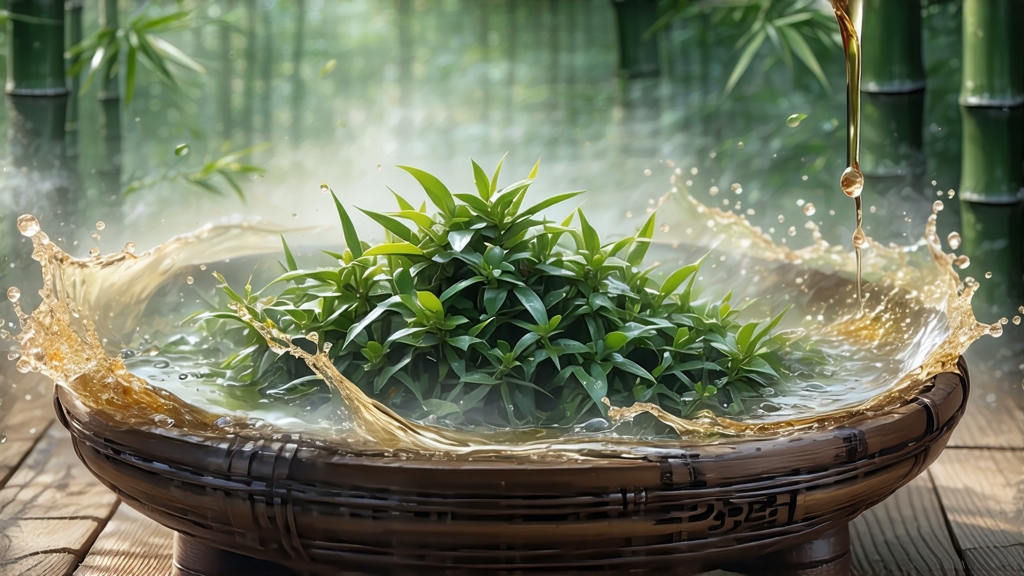
Liu Bao, literally “Six Forts,” is the quietest celebrity in China’s dark-tea galaxy. While Pu-erh grabs headlines, this Guangxi native has spent four centuries shipping down the Xun River to Southeast Asia, aging in the holds of junks and the stomachs of miners who swore it cured dampness faster than any medicine. Today the same leaves that once lined the baskets of coolies are winning trophies in London cupping labs, proving that history sometimes ferments into flavor.
The story begins in the limestone ridges of Wuzhou where the Qing government stationed six military forts—hence the name. Tea was not the garrison’s business until 1640, when regiments started requisitioning local big-leaf assamica to compress into tight bricks for rations. The humid march southward triggered accidental microbial ripening; soldiers noticed the darker the brick became, the lighter their gut felt. By the late nineteenth century Liu Bao was ballast in every clipper bound for Kuala Lumpur, traded ounce-for-ounce with tin and opium. Coolie contracts even carried a “tea clause” guaranteeing monthly rations because, without it, malaria and dysentery emptied the mines faster than dynamite.
Botanically, Liu Bao is Camellia sinensis var. assamica, but the sub-variety is “Zhongye” (medium leaf), broader than Yunnan’s Da Ye yet narrower than Fujian’s Xiao Ye. The plant hugs the misty granite slopes at 200–500 m, drinking mineral runoff that tastes like wet stone when you lick the raw leaf. Locals insist the real cultivar is “Heirloom Old Bush,” scattered in feral groves that survived the 1958 collectivization because the communes deemed them too remote to harvest. These uncles of the forest now supply the pre-Qingming tips coveted by Hong Kong cellars.
Making Liu Bao is a dialogue between fire, water, and time that starts the moment pickers break the first flush at dawn. Leaves are solar-wilted on split-bamboo trays for thirty minutes, just long enough for the edges to redden like blushing cheeks. A 200 °C drum roast follows, shorter than green tea’s kill-green but hotter, sealing in a hay-like sweetness that cuppers call “sweetgrass oil.” Then comes the unique step: wet piling inside century-old cellars dug into the limestone. Workers sprinkle 28 °C mountain water over 70 kg batches, stacking them 1.2 m high under jute tarpaulins. Over the next 25 days the pile breathes like a sleeping dragon, exhaling heat that hits 55 °C at the core. Thermophilic molds—Aspergillus, Blastobotrys, and the signature Eurotium christensenii—sketch ivory filigrees across the leaves, converting catechins into theaflavins and theabrownins that dye the liquor chestnut-maroon. Every third day the pile is “turned” by barefoot men who claim they can smell when the pH drops to 5.2, the moment acidity kisses sweetness. Finally the tea is steamed, pressed into 50 kg bamboo baskets called “lang,” and left to air-cure under the eaves of the mountain for another six months. The bamboo imparts a faint green-bamboo lactone note that later blooms into betel-nut aroma after three years of humid storage.
Liu Bao is classified by vintage, basket size, and degree of fermentation, creating a matrix that bewilders newcomers. “San He” denotes the traditional third-grade leaf with 60 % fermentation, while “Te Ji” is the top grade, 80 % fermented and tipped with golden buds. “Old Basket” refers to tea pressed before 1990 in the original lang weave; collectors prize the bamboo’s microbial imprint. A rare sub-style is “Dragon Ball,” 8 g spheres hand-rolled by grandmothers in Cangwu county, designed for dockworkers who needed single-serve portions. The most esoteric is “Cave Aged,” tea stored in natural karst caves where 90 % humidity and constant 20 °C encourage a secondary fermentation that turns leaves obsidian and brews a liquor thick enough to coat a spoon.
To brew Liu Bao gongfu style, begin by “awakening the dragon.” Rinse a 150 ml Yixing pot with 100 °C water, then fill one-third with leaves—about 6 g, twice the usual dose. The first 10-second flash